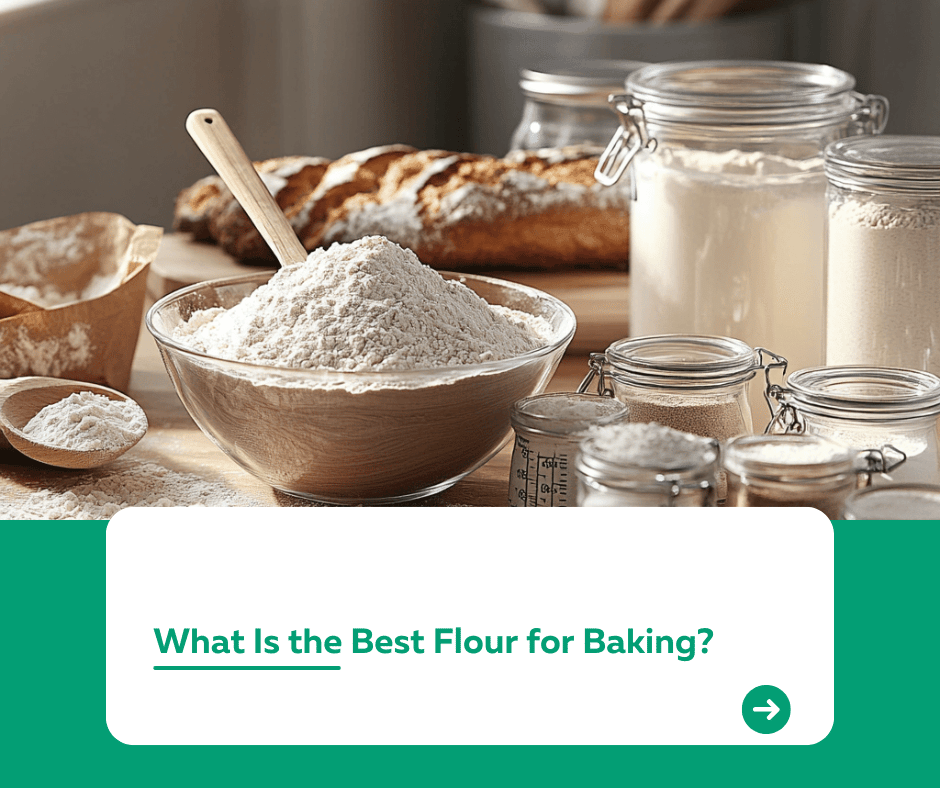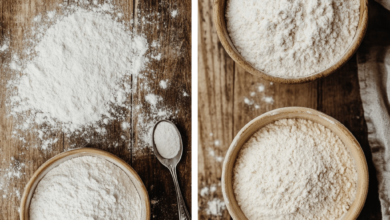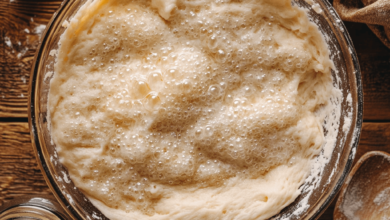What Is the Best Flour for Baking?

Introduction
Flour is a key ingredient in countless recipes, from bread to cakes and cookies. But with so many types available, what is the best flour for baking? Choosing the right flour can make or break your recipe. This guide will help you understand the different types of flour and how to select the perfect one for your baking needs.
1. Understanding Flour Basics
Flour is made by grinding grains, seeds, or nuts, with wheat being the most common source. The type of flour you choose depends on:
- Protein Content: Determines gluten formation, affecting texture and structure.
- Grind and Processing: Impacts the flour’s weight, texture, and suitability for specific recipes.
2. Types of Flour for Baking
2.1 All-Purpose Flour
- Protein Content: 10–12%
- Best For: Cookies, muffins, quick breads, and pancakes.
- Why It’s Popular: Versatile and suitable for most recipes.
2.2 Bread Flour
- Protein Content: 12–14%
- Best For: Yeast breads, pizza dough, and bagels.
- Why It’s Ideal: High protein creates strong gluten for a chewy texture.
2.3 Cake Flour
- Protein Content: 6–8%
- Best For: Cakes, cupcakes, and delicate pastries.
- Why It’s Ideal: Low protein ensures a tender, soft crumb.
2.4 Pastry Flour
- Protein Content: 8–10%
- Best For: Pie crusts, tarts, and cookies.
- Why It’s Ideal: Balances tenderness and structure.
2.5 Whole Wheat Flour
- Protein Content: 13–14%
- Best For: Bread, muffins, and hearty baked goods.
- Why It’s Ideal: Adds a nutty flavor and more nutrients.
2.6 Gluten-Free Flour
- Protein Content: Varies
- Best For: Gluten-free baking like brownies and muffins.
- Why It’s Ideal: Made from almond, rice, or coconut flour for those with dietary restrictions.
3. How to Choose the Best Flour
1️⃣ Match the Recipe: Use the type of flour specified for the best results.
2️⃣ Consider Protein Content: Higher protein for structure, lower protein for tenderness.
3️⃣ Dietary Needs: Gluten-free flours for those with celiac or gluten intolerance.
4️⃣ Experiment: Try blends of different flours to create unique textures and flavors.
4. Tips for Storing Flour
- Store flour in an airtight container to prevent moisture and pests.
- Keep it in a cool, dark place or refrigerate for longer shelf life.
- Label flours to avoid confusion, especially when using specialty types.
Conclusion
The best flour for baking depends on the recipe and the desired outcome. Understanding the different types of flour and their characteristics will help you elevate your baking skills. For more baking tips and tricks, visit Kuestion.com.




